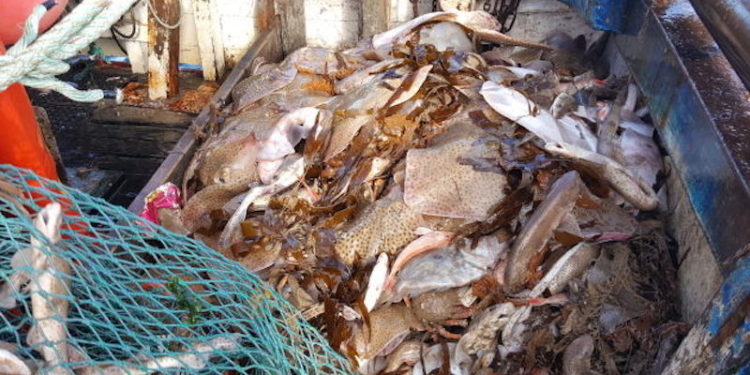A meeting of stakeholders, scientists and policy officials organised by the Commission to discuss alternative ways of managing the skates and ray stocks was held recently in Brussels. According to the NFFO, the very fact that such a meeting took place, and at the request of the member states, is significant.
‘This suggests that there is now general recognition that the current arrangement serves neither the industry, eager to harvest abundant species, like thornback or undulate ray, nor provides sufficient protection for other ray species that may (or may not) be depleted,’ The NFFO states.
‘The whole issue has been mired in a mist of data-deficiency and blunt management measures for several years, not least the misconceived prohibition on the landing of small-eyed ray and blond ray. There is now a glimmer of hope that a way forward can be found. What science there is confirms that some ray stocks of commercial interest are doing very well.’
Throughout the meeting there was broad agreement that the management of these fisheries is not fit for purpose, with sustainable fisheries on some ray species being thwarted and fishing opportunities lost. In addition, group skates and ray TAC covering 15 individual species is being dragged down by the weakest species while a blunt application of the precautionary approach drove the overall TAC downward by repeated 20% cuts over successive years, creating a significant regulatory discard problem in mixed fisheries where none previously existed; we are now dealing with the legacy of this blinkered approach.
According to the NFFO, a combination of data deficiency and the precautionary approach is now denying the fishing industry access to an important resource while doing little or nothing for those species which may need additional protection.
‘Species identification of and therefore the quality of official catch statistics, is a major problem. A very low group TAC, as at present, or an individual TAC for each of the15 species, will prove to be the ultimate choke when skates and ray fall under the landings obligation on 1st January 2019,’ the NFFO’s spokesman said.
‘Ray populations can be very loyal to specific areas but the TAC areas are frequently poorly aligned with the biological realities. Alternative ways of protecting individual sub-species, such as spatial and temporal measures, are likely to be more effective than their inclusion in a group TAC, if they are well designed, and there is good reason to believe that many ray species demonstrate high survival when returned to the sea promptly after capture but the evidence necessary to demonstrate this conclusively is not yet there and will not be for some time, making high survival exemptions from the landings obligation problematic.’
The looming problems associated with the incorporation of skates and ray under the landings obligation has been one of the main drivers for holding this meeting in the first place, although the issue has also been giving grief to all concerned at successive December Councils.
The Commission’s Scientific, Technical and Economic Committee for Fisheries will now be asked to evaluate a range alternative options with a report produced in late autumn. This will inform future management decisions. The participants in the meeting will have the opportunity to comment on the terms of reference before they go to STECF.
The industry has highlighted the inadequacy of the current arrangements and stressed the need for a new approach and has supported the views of fishermen in the room with knowledge based on practical and direct experience of local fisheries. While conceding that there was a problem of limited data on some species, the industry has questioned whether there was a generalised problem, against the background of dramatically reduced fishing mortality across all areas and all the main species groups in the NE Atlantic since 2000, as well as positive stock trends on associated species.
‘Although the speed at which the Commission moved to disapply the TAC for dab and flounder suggests that a new realism may be awakening in the Commission, the worry is that at least another year will go by struggling with a dysfunctional approach to the management of skates and ray,’ The NFFO states.
‘The obvious solution would be an interim measure in 2018 with a separate TAC for those stocks like thornback that are abundant, whilst continuing to develop innovative but realistic protective measures for where it is needed in time for 1st January 2019.’
‘The Brexit-shaped elephant in the room was alluded to on several occasions but as the skates and ray stocks will continued to be shared after the UK leaves the EU (and therefore the CFP), the work done in this meeting will be relevant under any scenario. Ensuring adequate fishing opportunities for fishermen, while affording stock protection where it is needed will be at the focus of management concerns, whatever the regime.’









